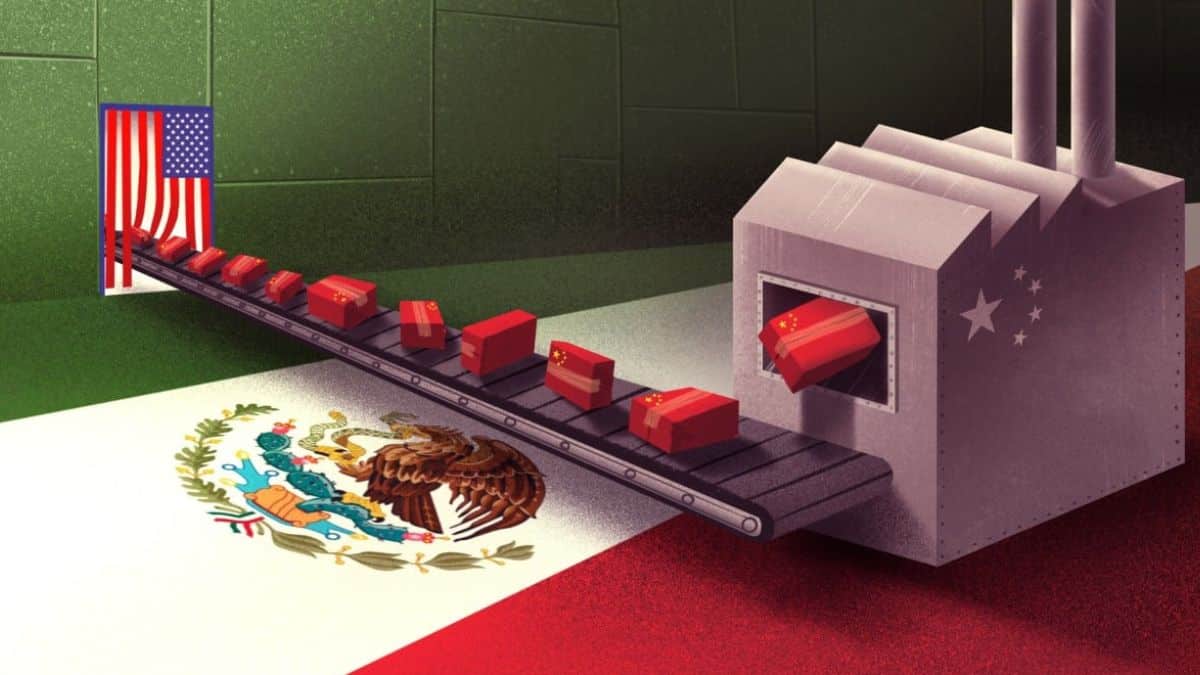 Image Credits - Davies Christian Surya (Illustration)
Image Credits - Davies Christian Surya (Illustration)
Chinese manufacturers, driven by the desire to sidestep Washington’s tariffs, have notably increased their investments in Mexico. However, analysts caution that while this move tends to provide an alternative route into the lucrative United States market, it comes with its own set of risks.
The increase in investments of China in Mexico has been evident in various sectors, with a notable impact on the automotive industry. Despite the imposition of strict trade restrictions by Washington in the year 2018, the export value of automotive components sent to Mexico saw a remarkable increase of at least 35% that same year. This upward trend carried on with a substantial 48% jump in the year 2021.
According to the General Administration of Customs of China (GAC), the subsequent two years experienced an annual growth rate of 14% in the export value of automotive components to Mexico.
Notably, the volume of China’s exports of auto components to Mexico has also surged, reaching 2.6 times the pre-U.S.-China trade war levels of 2017 in 2023. This statistic emphasizes the depth of Chinese manufacturers’ penetration into the Mexican market.
These figures correspond with the global tendency towards nearshoring. This is where manufacturers relocate their business operations and productions to a country nearby or a country close to an important market. To supply chains and to use a more cost-effective labour force, Chinese firms are quite eager to avoid any kind of geopolitical disruptions.
The battery export from China to Mexico escalated up to 35 per cent year on year in 2018, which was followed by 32 per cent in the year 2021 and 11 per cent in the year 2022. However, according to the GAC (General Administration of Customs of China) the previous year this figure witnessed a drop of at least 6 per cent. As stated by the Mexican government data, the direct investment from China to Mexico decreased by almost U.S.$21 million in the first three quarters of the year 2023 which in 2022 reached almost a high of U.S.$587.2 million.
Several companies of China are investing in the U.S. border state of Nuevo Leon, shifting away from Mexico City. Evan Ellis, a research professor of Latin America studies at the U.S. Army War College’s Strategic Studies Institute asserted, ‘One senses that the lion’s share of that orientation is to position those companies to maintain access to the U.S. market and follow major suppliers in that U.S. supply chain.”
Major telecom giants of China such as Huawei Technologies, home appliances maker Hisense, and also battery company Contemporary Amperex Technology have positioned in Mexico. These companies are under the microscope of the U.S. government. Huawei has been sanctioned and the other two are currently under investigation.
Ilaria Mazzocco, who is the trustee chair in Chinese business and economics with the Center for Strategic and International Studies that is a Washington-based think tank, stated that companies would need to be flexible and adapt quickly to adjust to the environment of Mexico, but there were significant draws for them as they make plans to enter the American market.
At a December news conference, China’s Ministry of Commerce stated that its cooperation with Mexico on new energy vehicles is quite normal commercial activity between the two sovereign nations adding that the United States has no right to intercede. Chong Ja Jan who is an assistant political science professor at the National University of Singapore stated that the officials in Beijing will underpin offshoring to Mexico as long as it brings back home revenue.
